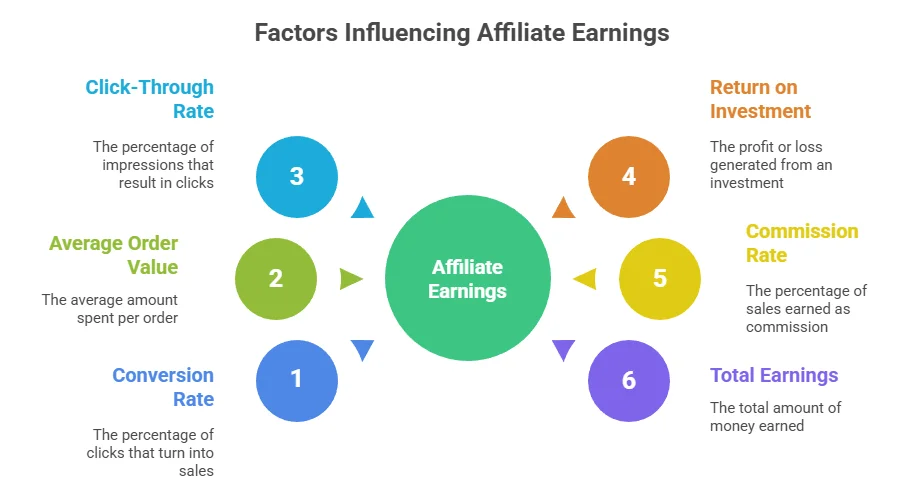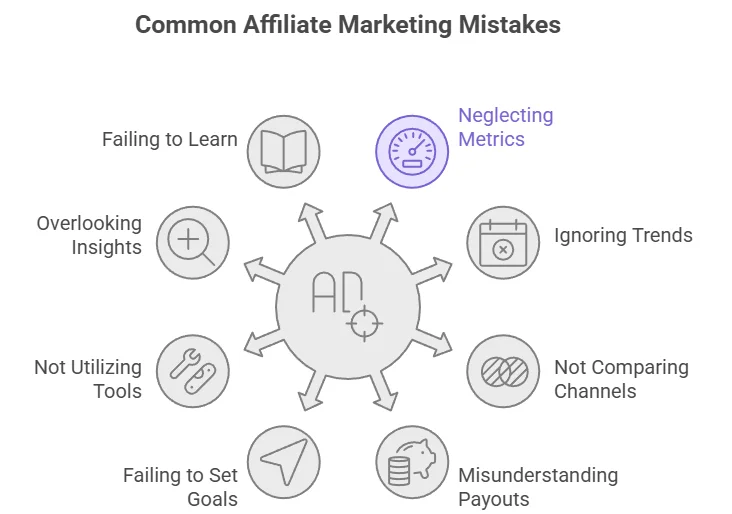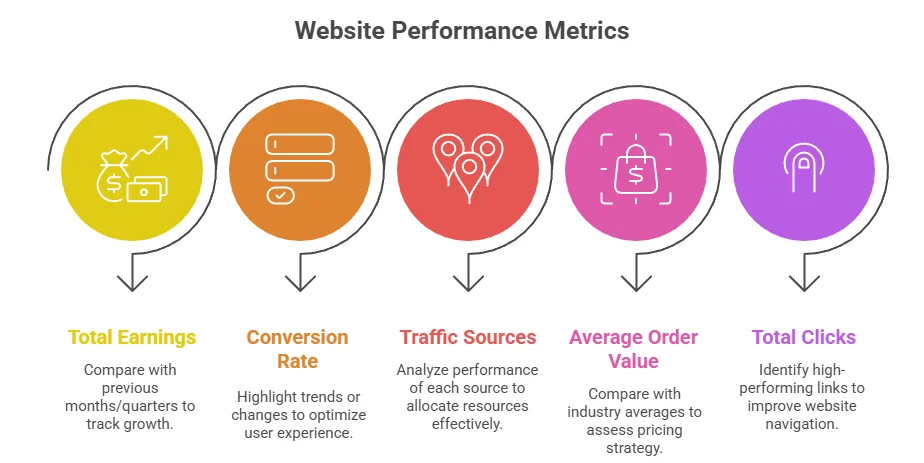
Key Components of Affiliate Earnings Reports
To make sense of your affiliate earnings reports, focus on a few crucial components:
- Total Earnings: This represents your total income from affiliate sales over a specified time period.
- Commission Rates: This includes the percentage paid to you from each sale. Different products or services can have varying commission structures.
- Clicks: This metric indicates how many times potential customers clicked on your affiliate links.
- Conversions: This shows the number of clicks that resulted in actual purchases. Understanding your conversion rate can help you evaluate the effectiveness of your promotional strategies.
- Refunds and Chargebacks: Keep an eye on these numbers, as they can affect your net earnings significantly.
How to Analyze Your Earnings Reports
Once you have your report, a thorough analysis will reveal trends and patterns in your affiliate earnings. Here’s how you can approach this:
1. Track Performance Over Time
Create a timeline to track your earnings. Look at your reports monthly or quarterly to see how your income grows or declines. This strategy allows you to pinpoint seasonal trends, giving you clues about when to ramp up your marketing efforts or offer promotions.
2. Compare Different Products
Not all products will perform equally well. Sort through your affiliate earnings by product to see which ones are leading in sales. This will help you focus your promotional efforts on the most profitable items. Here’s a potential layout for organizing such data, which is useful when studying Affiliate Earnings Report Examples:
| Product Name | Clicks | Sales | Commissions Earned | Conversion Rate |
|---|---|---|---|---|
| Product A | 500 | 50 | $250 | 10% |
| Product B | 300 | 15 | $75 | 5% |
| Product C | 600 | 120 | $600 | 20% |
3. Evaluate Affiliate Partners
Analyzing which affiliate programs perform best can showcase your strongest partnerships. Some programs may provide higher payouts but also involve more complexities. Review your earnings to see which partners contribute most to your income and consider diversifying if necessary. You can also check resources like Affiliate Window for more affiliate partners.
4. Monitor Trends
Look for trends and anomalies in your data. For instance, if you notice a spike in sales after a particular campaign, investigate what worked. Was it the product, the marketing message, or the channel used? Use these insights to replicate successful strategies in future campaigns.
Common Metrics to Watch
When reviewing your affiliate earnings reports, keep track of these essential metrics:
- Click-Through Rate (CTR): This reflects the effectiveness of your affiliate links.
- Return on Investment (ROI): Knowing how much income generated for each dollar spent on marketing is vital for evaluating overall profitability.
- Customer Retention Rate: If your affiliate offers recurring commissions, understanding the retention can lead to sustained earnings.
Enhancing Future Strategies
Using Affiliate Earnings Report Examples wisely can transform your business strategy. Join forums or platforms like My Affiliate Program to share insights and learn from fellow marketers. Active engagement in communities enhances your knowledge and allows you to tap into successful tactics used by others.
Diving deep into your affiliate earnings reports not only reveals where you stand today but offers a blueprint for your future endeavors. The more you analyze and adjust based on these insights, the better your chances of achieving sustained financial success in affiliate marketing.
Key Metrics to Track in Your Affiliate Earnings Reports

Tracking key metrics in your affiliate earnings reports is essential for understanding your business’s financial health, identifying strategies that work, and pinpointing areas for improvement. To make the most of your affiliate marketing efforts, focus on a few critical metrics that can provide you with valuable insights and drive better decision-making.
Understanding Conversion Rate
The conversion rate is one of the most important metrics to monitor. This figure tells you the percentage of visitors who take your desired action, such as making a purchase through an affiliate link. A high conversion rate indicates that your promotional strategies are effective. For calculating this and other metrics, studying Affiliate Earnings Report Examples is highly beneficial.
To calculate conversion rate:
Conversion Rate (%) = (Number of Conversions / Total Visitors) x 100
For example, if you have 100 visitors and 5 of them make a purchase, your conversion rate is 5%. You can improve this rate by optimizing your landing pages, enhancing your content, and testing different calls-to-action.
Average Order Value (AOV)
The average order value (AOV) reflects the average amount of money spent each time a customer makes a purchase. This metric is crucial for maximizing revenue, as you can enhance income by encouraging customers to spend more per order.
To find your AOV:
AOV = Total Revenue / Number of Orders
For instance, if your total revenue is $2,000 from 100 orders, your AOV is $20. Consider bundling products or offering discounts for bulk purchases to increase your AOV.
Click-Through Rate (CTR)
Your click-through rate shows how often people click your affiliate links compared to how many times your links were viewed. A high CTR suggests that your content is engaging and persuading readers to take action.
Calculate your CTR using the following formula:
CTR (%) = (Total Clicks / Total Impressions) x 100
If your affiliate link received 200 clicks out of 10,000 views, your CTR is 2%. You can improve CTR by refining your promotional methods, such as using eye-catching visuals and compelling content.
Return on Investment (ROI)
Return on investment is a vital metric that determines the profitability of your affiliate marketing efforts. By analyzing your ROI, you can determine if the time, money, and effort spent on your campaigns are worthwhile.
To calculate ROI:
ROI (%) = [(Net Profit / Cost of Investment) x 100]
If you spent $500 on affiliate marketing and generated a profit of $1,000, your ROI is 100%. Regularly tracking this metric ensures that you are steering your resources in the right direction.
Commission Rate
Your commission rate is another essential metric to monitor. This rate indicates how much you earn for each sale completed through your affiliate link. While a higher commission rate can significantly boost your earnings, focusing on attracting high-quality traffic is equally important.
Keep an eye on different affiliate programs, as they may offer varying commission rates. Evaluate which programs align best with your audience and can provide sustainable earnings over time.
Total Earnings and Payout Data
Please remember to analyze your total earnings regularly. Knowing how much you’ve earned allows you to assess the effectiveness of your strategies and make informed decisions moving forward. Additionally, keep track of payout data for each affiliate program, as this can inform your budgeting and forecasting strategies.
| Metric | Calculation | Example |
|---|---|---|
| Conversion Rate | (Conversions / Visitors) x 100 | 5% (5 purchases from 100 visitors) |
| Average Order Value | Total Revenue / Orders | $20 ($2,000 from 100 orders) |
| Click-Through Rate | (Clicks / Impressions) x 100 | 2% (200 clicks from 10,000 views) |
| Return on Investment | (Net Profit / Cost) x 100 | 100% ($500 spent, $1,000 profit) |
To delve deeper into understanding affiliate earnings reports, consider visiting AffiliatePrograms.com for expert insights and strategies. Regular analysis of these key metrics can help you optimize your affiliate marketing efforts, enabling you to increase earnings and drive successful results, making your own data as informative as the best Affiliate Earnings Report Examples.
How to Create Your Own Effective Affiliate Earnings Report
Creating your own affiliate earnings report can be a game-changer for your online business. An effective report provides not only insight into your earnings but also highlights areas for improvement. You can enhance your strategies by evaluating what works and what doesn’t. Here’s how to create a clear and informative affiliate earnings report that will benefit you.
Identify Key Metrics
Before you start writing your report, it’s essential to determine which metrics are most relevant to your affiliate marketing performance. Here are a few key metrics you should consider, drawing inspiration from strong Affiliate Earnings Report Examples:
- Total Earnings: This is the total income earned from your affiliate programs over a specified period.
- Conversion Rate: The percentage of visitors who take the desired action, such as making a purchase through your affiliate link.
- Traffic Sources: Identify where your visitors come from, such as social media, organic search, or email marketing.
- Average Order Value (AOV): The average amount spent by customers who click through your affiliate links.
- Total Clicks: The total number of clicks generated through your affiliate links.
Collect Relevant Data
Once you’ve determined the key metrics, it’s time to gather data. You should pull information from your affiliate networks, analytics tools, and tracking software. Some popular tools include:
- Google Analytics – Track website traffic and user interactions.
- ClickBank – Gather data on product sales and customer behavior.
- Affiliate Programs – A resource for finding various affiliate programs and tracking your performance.
Format Your Report
A well-structured report is more digestible for you and stakeholders. Here’s a suggested format:
| Metric | Value | Notes |
|---|---|---|
| Total Earnings | $X,XXX | Compare with previous months/quarters. |
| Conversion Rate | X% | Highlight trends or changes. |
| Traffic Sources | List of top sources | Analyze performance of each source. |
| Average Order Value | $XX | Compare with industry averages. |
| Total Clicks | X,XXX | Identify high-performing links. |
Analyze and Interpret the Data
Once you have formatted your data, it’s crucial to analyze it. Ask the following questions:
- Which traffic source yielded the highest conversions?
- Is there a noticeable pattern in high and low earning periods?
- Are certain products consistently outperforming others?
This analysis will help you make informed decisions moving forward and optimize your marketing strategies.
Set Goals Based on Insights
Using the data and analysis, set measurable goals for the next reporting period. Consider areas like:
- Increasing traffic from high-performing sources.
- Testing different calls-to-action to improve conversion rates.
- Exploring new affiliate programs that align with your audience’s interests.
Review and Share Your Findings
Don’t forget to keep an eye on your findings periodically. Sharing your report with team members or stakeholders can foster collaboration and improve your strategies over time. You can discuss results in online meetings or share via email. Ensure everyone understands the goals set and is on board with the strategies.
Creating your affiliate earnings report doesn’t have to be tedious. By following these steps, you can craft an effective report that will guide you in achieving better results. With data at your fingertips, you can make smarter decisions that boost your income. For more tips and resources, visit Affiliate Marketing Website.
Learning from Successful Affiliate Marketers’ Earnings Reports
Successful affiliate marketers often share their earnings reports, and these examples can provide you with crucial insights. Learning from their experiences helps you understand which strategies work and which don’t. Here, we will explore some winning tactics and what you can learn from the earnings reports of seasoned affiliate marketers.
Understanding Earnings Reports
Earnings reports typically break down how much money an affiliate marketer has made, the sources of their traffic, and which products are performing well. By analyzing these reports, you can identify key patterns that might influence your own success. Here are some key components often included in these Affiliate Earnings Report Examples:
- Total Earnings: The total income generated in a specific period.
- Traffic Sources: The platforms from which the traffic originates, such as social media, blogs, or email newsletters.
- Conversion Rates: The percentage of visitors who take a desired action, such as making a purchase.
- Top-Performing Products: The items or services that generate the most revenue.
Key Takeaways from Successful Affiliates

Many noteworthy affiliate marketers share their earnings reports through blogs and podcasts. This transparency helps newcomers in the field understand potential earnings and growth trajectories. Here are some common takeaways:
- Focus on a Niche: Successful marketers often emphasize the importance of choosing a specific niche, which allows them to become authorities in their field. This specialization improves trust among their audience and boosts conversion rates.
- Build an Email List: Many top earners highlight the significance of building an email list. A subscriber base allows you to foster relationships, automate promotions, and drive consistent sales.
- Leverage Multiple Traffic Sources: Relying on just one traffic source can be risky. Diversifying your traffic sources, from SEO to paid ads, can enhance your overall performance.
- Quality Content is Key: Engaging, informative, and valuable content captivates audiences. Reports reveal that successful marketers invest time and effort into high-quality content that resonates with their audience.
Examples of Successful Affiliate Earnings Reports
To illustrate the best practices highlighted above, consider these examples of successful affiliate earnings reports:
| Marketer | Total Earnings | Traffic Sources | Top Product |
|---|---|---|---|
| John Doe | $15,000 | SEO, Email, Social Media | Fitness Program |
| Jane Smith | $20,000 | Paid Ads, Blog Traffic | Home Automation Device |
| Pat Flynn | $30,000 | Podcast, Email Marketing | Online Course |
Tools and Resources for Tracking Earnings
Tracking your earnings is vital for evaluating your performance as an affiliate marketer. Here are some useful tools:
- Google Analytics: Helps track website traffic and conversion rates.
- Affise: A platform specifically designed for affiliate performance tracking.
- ThirstyAffiliates: A WordPress plugin that enables easy link management and tracking.
By analyzing the tactics employed by successful affiliate marketers alongside their earnings reports, you can lay a strong foundation for your own affiliate marketing journey. Dividing your focus across content quality, diverse traffic sources, and niche specialization can pave the way for consistent growth and earnings in this competitive landscape.
Common Mistakes to Avoid When Reviewing Affiliate Earnings Reports

When diving into the world of affiliate marketing, reviewing your earnings reports plays a crucial role in understanding your performance and optimizing your strategies. However, many affiliates make common mistakes when analyzing these reports that can hinder their potential for success. Here are some pitfalls to avoid as you navigate your Affiliate Earnings Report Examples.
Neglecting to Track All Metrics
One major error is focusing solely on total earnings without taking into account other important metrics. Understanding clicks, conversions, and average order value can provide a fuller picture of your marketing efforts. Here are essential metrics to track:
- Total Earnings: The final amount you earned from your affiliate program.
- Clicks: The total number of times users clicked on your affiliate links.
- Conversion Rate: The percentage of clicks that resulted in a sale or lead.
- Return on Investment (ROI): A measure of the profitability of your campaigns.
Ignoring Trends Over Time
Another common mistake is failing to analyze trends over time. Looking at your earnings report for a single month can be misleading. Instead, review data over several months to identify patterns and seasonal trends. This can help you tailor your marketing strategies effectively.
Not Comparing Performance Across Different Channels
Many affiliates fail to compare the performance of various traffic sources. Some channels may perform significantly better than others. For example, your social media efforts might bring in more sales than email marketing. Be sure to analyze performance by channel to optimize where you invest your resources.
Misunderstanding Payout Structures
Different affiliate programs have various payout structures, including pay-per-click (PPC), pay-per-sale (PPS), and pay-per-lead (PPL). Understanding these structures is crucial for accurately estimating your earnings potential. Misinterpreting how you earn can lead to skewed expectations.
Failing to Set Goals
Without specific goals, it’s hard to evaluate your performance accurately. Setting measurable goals can help you align your strategies and stay focused. Here are a few examples of goals you might set:
- Increase conversion rates by 10% over the next quarter.
- Expand into additional affiliate programs within six months.
- Build an email list with a target of 1,000 subscribers in one year.
Not Utilizing Tools or Software
Many affiliates underestimate the importance of utilizing analytical tools or software to review their earnings reports. These tools can automate tracking, provide insights, and help visualize your data effectively. Consider tools like Google Analytics for web analytics and Affilimate for affiliate performance tracking.
Overlooking Customer Insights
Your earnings reports can reveal useful customer insights. For instance, understanding customer demographics and preferences can guide you in creating more targeted content. However, affiliates often ignore this information. Pay attention to which products perform best and tailor your marketing messages accordingly.
Failing to Learn from Data
It’s vital to not only collect data but also to learn from it. After reviewing your earnings reports, jot down what worked well and what didn’t. This reflection can inform future strategies, helping you steer clear of repeating mistakes.
By avoiding these common mistakes when reviewing your Affiliate Earnings Report Examples, you’ll be better positioned to leverage the data to your advantage. Make sure you analyze the right metrics, track performance over time, and utilize the right tools to maximize your affiliate marketing success.
